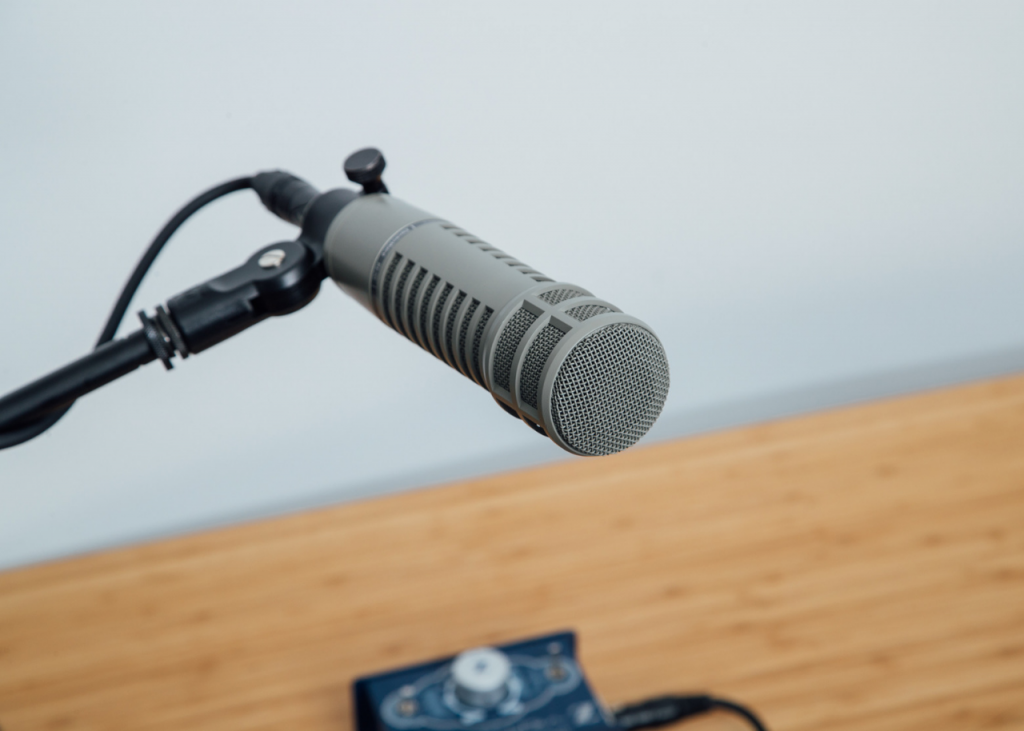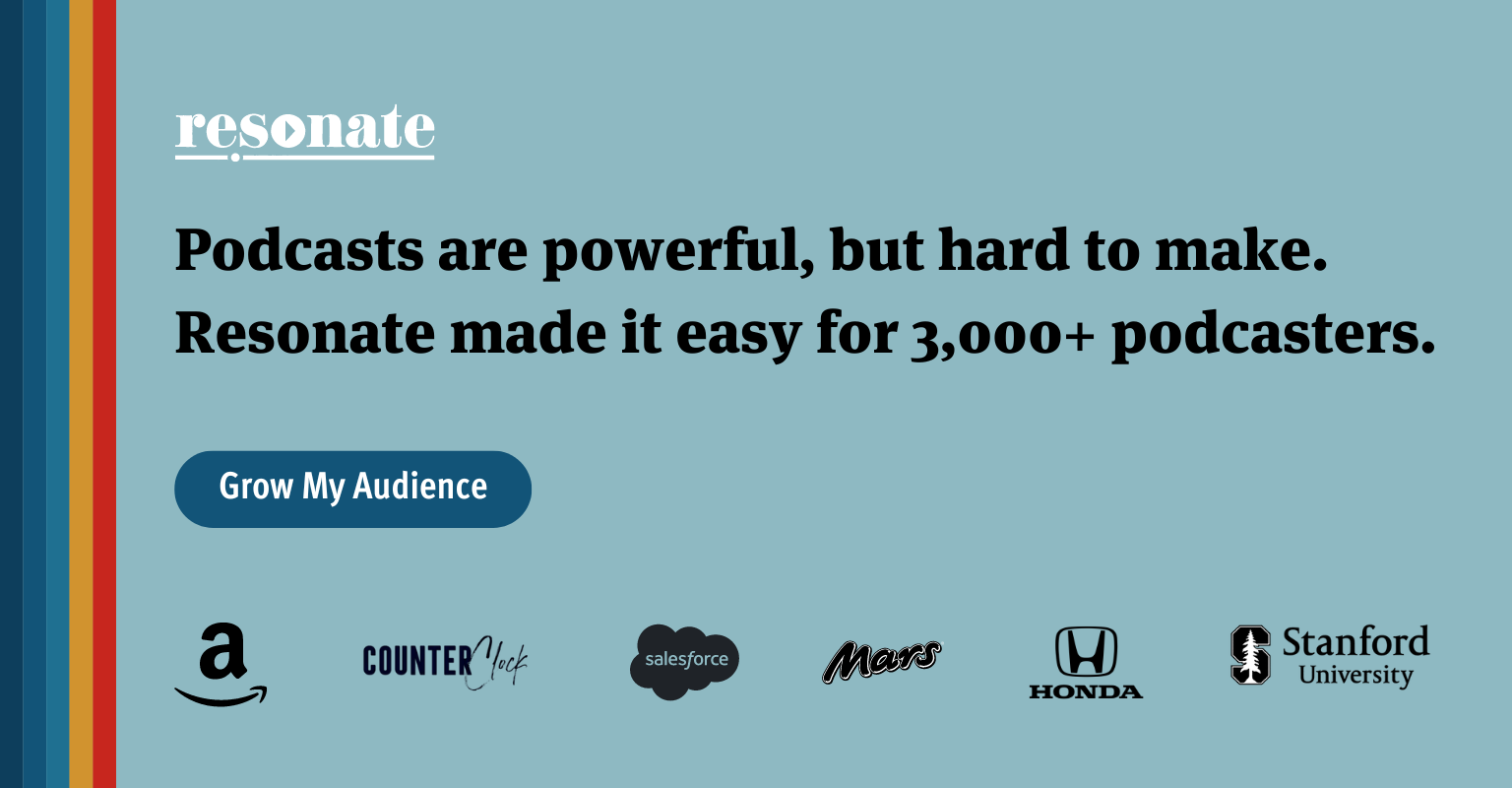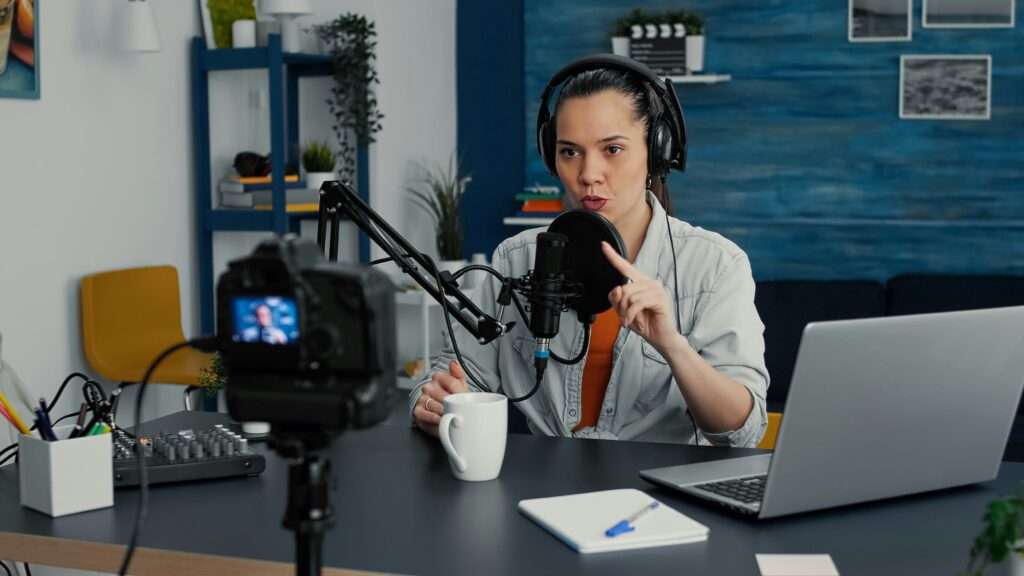Microphones have been around since the 1870’s, which included prototypes from Alexander Graham Bell (a major contributor to the development of the telephone).
We’ve come a long way from there to modern mics that pick up sounds. We are well past the days of using those desk microphones that look like weird trophies and the “candlestick” microphones.
However, the basic idea was there from the beginning. That is, create a device that converts sound waves (e.g., a dog’s bark) into electrical signals. Think of it as like translating a natural phenomenon into technological data.
These electrical signals are used as audio output that can be used in amplifying or recording that sound source.
However, this technology still plays an important role in our lives, especially in media production and consumption.
Microphones allow us to capture a sound, such as a podcaster’s voice, with a clarity that can in turn be captured by recording equipment or broadcast by something like a loudspeaker.
Since this is a podcasting blog, we will focus on microphones that are best for recording.
The Importance of Microphones in Podcasting
Without microphones, there would be no podcasting industry.
In podcasting, you want to make sure that everyone’s voice is heard clearly.
Especially when recording with guests who are not themselves podcasters, it is worth looking for a microphone that can pick up and maintain quality sound even if the guest shifts around.
As it turns out, there are several different types of microphones out there. Your choice depends on your podcasting set-up—and budget, of course.
Below, we go over the USB microphone, which is one of the most-popular kinds of microphones available.
These USB microphones are especially relevant to D.I.Y. podcasters of all budgets. This blog will offer some recommendations for USB, dynamic, and condenser microphones that a total beginner or a seasoned professional should check out.
USB Microphones
A USB microphone will convert analog audio signals into digital audio signals. This makes it a popular option for recording directly on computers.
These microphones can make a great budget pick, especially for low-tech podcasters who do solo shows or frequently record remote shows.
Just about every laptop and computer has a USB port or even multiple, making this a popular option for D.I.Y. podcasters who just want a plug-and-play option for recording good sound.
So, if you want to skip a full-blown investment in a personal recording set-up, this can be the next best option.
If you are thinking of skimping out on making the investment here because laptops have built-in microphones, and earphones or headsets have microphones, do note that there can be a drastic difference in sound quality between a USB microphone and these alternatives.
USB Microphones Worth Considering
What criteria you ultimately go by depends on your set-up and standards.
If you are able to secure a silent peaceful set up, then you could get away with buying a cheaper mic that picks up more background noise. Though picking up any background noise at all may sound like a downside, it can be useful when having on guests who may move around or talk away from the microphone.
Generally speaking, even a budget USB microphone will be a step up from your laptop’s serviceable microphone, so it is worth the investment.
512 Audio Tempest
This was the top choice for USB microphones on a list made by The New York Times’ Wirecutter column.
Under $200 (as of this early-2025 writing), this microphone has a large diaphragm and a cardiod polar pattern (A.K.A. pickup patterns) especially suitable for picking up voices.
A dynamic microphone good for picking up sound from a certain direction, it is a reasonably priced (especially if you find one for under $100) microphone for an aspiring podcaster.
A mute button is ideal for silencing your own mic while a guest speaks, and adjustable headphone volume makes it easy to monitor the audio during recording.
RØDE PodMic USB
If you are new to podcasting, let us apprise you of the fact that this is one of the most-popular podcast mics out there.
Even if you have never spoken into a podcast microphone before, if you have seen video podcasts, the odds are that you have seen the RØDE brand-name logo on the microphones that fold like robot arms.
This front-address microphone means that you get high-quality sound by speaking directly into it, which is something to remind guests of if you have them use this mic.
JLAB Talk
This budget-pick microphone got a good review from Tom’s Hardware, where the only chief complaint is that it can pick up background noise. That could be a problem if you record in noisy environments, like a home where a barking dog in another room may interrupt the flow of the podcast.
However, if you are able to secure a mostly silent space for recording, this could be it.
Blue Yeti X
This microphone is like the RØDE in that it is a well-recognized classic in the podcasting field.
And classics are classics for a reason, right?
Here, the reasons include multi-pattern options for different kinds of recording set-ups, picks up quality sound in a side address, and can easily swivel while in use to make for easy adjustments.
It can record 24-bit audio, which is certainly good for a laptop set-up. A headphone jack and low-latency monitoring also make for a good choice.
Dynamic Microphones
These microphones use electromagnetism to induce the electrical signals that become audio output.
Among dynamic mics, there are moving-coil mics and ribbon mics.
Moving-coil mics have a coil attached to the diaphragm. When sound waves hit the diaphragm, it moves, and so does the coil, creating an electrical signal.
The ribbon mic involves a transducer—basically, something that converts physical changes into electrical signals—in the form of a “ribbon”, which is usually a strip of aluminum, that moves within a magnetic field when sound waves hit it.
Three Dynamic Microphones Worth Considering
Shure SM7dB
Like a popular car or smartphone that continues to evolve through different iterations, this microphone is a top choice in the podcasting field.
As with many dynamic microphones, it is an excellent choice to use in loud environments without worrying about every single little noise making its way into your recording.
The optional pop filter can help deliver crisper sounds.
If you do use this one, make sure to speak directly into it, as it is not designed to pick up background noise.
RØDE Procaster
A ZDNet review describes this mic as offering broadcast-quality sound.
If you are a video podcaster, however, do note that it looks purely functional, and is not all that “interesting” to look at, if that is a factor that matters to you.
Its internal pop filter can offer clean pickup of harsher sounds.
Do note that this mic can be something of a power hog, so you will need a strong interface that can handle it.
BEACN MIC
Okay, it may seem like this is cheating a bit here, because it is indeed a USB mic (do note that USB mics can be dynamic mics; the USB part is about the connectivity whereas the dynamic is about audio engineering).
This option is excellent for D.I.Y. podcasters looking to keep things relatively low-tech, as BEACN offers a proprietary software package.
Condenser Microphones
These microphones tend to be more expensive than dynamic microphones. However, it pays off in the form of clear high-fidelity sound.
One of the major draws of condenser microphones is that it is better than dynamic mics at handling high-frequency sounds.
These also tend to feature more background noise from recordings, so it is best to invest in one if you have a quiet studio environment to record in.
Three Condenser Microphones Worth Considering
JLab Talk
This microphone is considered a good-quality “cheap” microphone with a USB plug-in.
Part of it is that it allows for multiple pickup patterns, so you are not limited to just one.
That can be especially useful for podcasters who do interviews and solo shows with just one microphone. Switching on the bidirectional mode, for instance, can make for an easy across-the-table conversation using just one microphone.
Neumann TLM 102
If you are really looking to go hard and pay a high price for high quality, then Neumann is one of those companies to check out.
According to Neumann, this condenser mic is the company’s most-affordable option, which for that company must mean a microphone that is under $1,000.
Still, as the saying goes, you get what you pay for, and what you get here is excellent sound quality.
Also, the thing just looks like a high-quality microphone, so if you are a video podcaster with an eye for aesthetics, this one could be great to invest in.
Audio Technica AT2020
If you are tech-savvy (or willing to put in some time to get tech-savvy enough to learn about XLR hookups), then you can get quality sound from this microphone.
Audio Technica has a reputation for offering good-quality audio technology, including headphones.
It offers a cardioid pickup pattern, meaning it is good for capturing sound directly in front of it.
Also, you will have to supply your own XLR cables, as the microphone comes with few accessories.
However, the upside to that is that the microphone is fairly affordable, so if you already have the tech equipment on hand to implement this mic, then you can get a better deal here than a condenser microphone that comes with an XLR cable that you already have.
More Microphone Recommendations from Resonate Recordings
If you are looking to partner with a professional podcast-production company, then we can certainly help you out! We can help you find the best mic for set-up—or, let us handle recording, and you will have access to our high-quality equipment!












